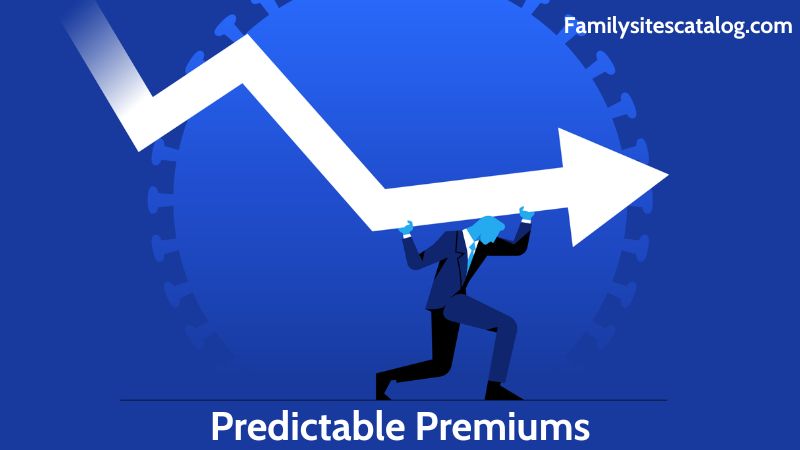In the realm of financial planning and risk management, whole life insurance stands out as a stalwart option for individuals seeking comprehensive coverage from Familysitescatalog that extends throughout their lifetime. Unlike its counterpart, term life insurance, which offers coverage for a specified period, whole life insurance provides a safety net that endures for as long as premiums are paid. This enduring protection, coupled with an array of unique features and benefits, makes it a cornerstone of many individuals’ financial portfolios.
At its core, whole life insurance serves as a shield against the uncertainties of life, offering peace of mind to policyholders and their loved ones. The key distinguishing factor of whole life insurance is its lifetime coverage provision. From the moment the policy is initiated until the insured’s passing, it stands as a steadfast guardian, ensuring that financial obligations and family needs are met, regardless of when the inevitable occurs.
Lifetime Coverage: The Bedrock of Whole Life Insurance
A defining characteristic of whole life insurance is its ability to accumulate cash value over time. This cash value component sets whole life insurance apart from other forms of insurance and serves as a dual-purpose feature. Firstly, it provides a form of savings within the policy, allowing policyholders to build a nest egg over the years. Secondly, it offers liquidity, enabling policyholders to access funds through loans or withdrawals during their lifetime. This cash value element injects a layer of versatility into whole life insurance, transforming it from a mere risk management tool into a multifaceted financial instrument.
Predictable Premiums: Stability in an Uncertain World
One of the most appealing aspects of whole life insurance is the predictability it offers in terms of premiums. Unlike term life insurance, where premiums may fluctuate with each renewal, whole life insurance premiums are typically fixed. This means that policyholders can lock in a rate that remains constant throughout the life of the policy, providing a sense of stability and predictability in an uncertain world. This feature not only facilitates long-term financial planning but also ensures that policyholders can budget effectively without the fear of escalating costs as they age.

Death Benefit: A Lifeline for Loved Ones
The heart of whole life insurance lies in its death benefit provision. Upon the insured’s passing, the policy pays out a predetermined sum, known as the death benefit, to the designated beneficiary. This death benefit serves as a lifeline to the insured’s loved ones, providing financial support during a time of immense emotional and practical upheaval. Importantly, the death benefit is typically tax-free, offering a source of financial relief without the burden of additional tax liabilities. This tax-free nature further enhances the appeal of whole life insurance as a means of safeguarding one’s legacy and ensuring the financial well-being of future generations.
Guaranteed Protection: A Foundation for Financial Security
Integral to the appeal of whole life insurance is the guarantee it provides. From guaranteed lifetime coverage to a guaranteed minimum interest rate on cash value accumulation, policyholders can rest assured knowing that their insurance policy offers a reliable foundation upon which to build their financial future. This guarantee extends to the stability of premiums, ensuring that policyholders are shielded from the fluctuations of the market and the uncertainties of life. In an increasingly volatile world, the peace of mind offered by these guarantees cannot be overstated.

Estate Planning: Preserving Legacies for Future Generations
Whole life insurance also serves as a valuable tool in estate planning. By providing a tax-efficient means of transferring wealth to future generations, it enables individuals to leave a lasting legacy for their heirs. The death benefit bypasses the probate process, ensuring a swift and seamless transfer of assets to beneficiaries. Additionally, whole life insurance can be used to cover estate taxes and other final expenses, alleviating the financial burden on heirs and preserving the integrity of the estate. In this way, whole life insurance transcends its role as a mere insurance policy and emerges as a strategic component of a comprehensive estate plan.

Policy Loans: Accessing Cash Value for Financial Needs
One of the unique features of whole life insurance is its policy loan provision. Policyholders have the option to borrow against the cash value of their policy at relatively low interest rates. These loans provide a source of liquidity for various financial needs, whether it be funding education expenses, purchasing a home, or weathering unexpected financial challenges. Importantly, policy loans do not require a credit check and can be accessed quickly and easily, making them a convenient and flexible resource for policyholders.
Considerations and Conclusion
While life insurance offers a host of benefits and features, it’s essential to acknowledge that it may not be the right choice for everyone. The premiums for whole life insurance tend to be higher than those for term life insurance, reflecting the lifetime coverage and cash value accumulation components of the policy. Additionally, the rate of return on the cash value portion of the policy may not match that of other investment options, leading some individuals to seek alternative means of wealth accumulation. Furthermore, policy loans can diminish the death benefit if not repaid, potentially impacting the financial security of beneficiaries.
In conclusion, whole life insurance stands as a testament to the enduring principles of protection, stability, and legacy. With its lifetime coverage provision, cash value accumulation feature, and array of guarantees, it offers a comprehensive solution to the uncertainties of life. Whether used as a risk management tool, a savings vehicle, or a means of estate planning, it serves as a cornerstone of financial security for individuals and families alike. By understanding the benefits and features of whole life insurance, individuals can make informed decisions that align with their long-term financial goals and aspirations.





